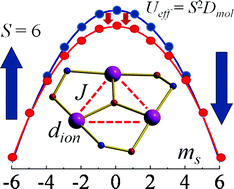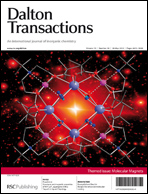This perspectives article takes a broad view of the current understanding of magnetic bistability and magnetic quantum tunneling in single-molecule magnets (SMMs), focusing on three families of relatively simple, low-nuclearity transition metal clusters: spin S = 4 NiII4, MnIII3 (S = 2 and 6) and MnIII6 (S = 4 and 12). The MnIII complexes are related by the fact that they contain triangular MnIII3 units in which the exchange may be switched from antiferromagnetic to ferromagnetic without significantly altering the coordination around the MnIII centers, thereby leaving the single-ion physics more-or-less unaltered. This allows for a detailed and systematic study of the way in which the individual-ion anisotropies project onto the molecular spin ground state in otherwise identical low- and high-spin molecules, thus providing unique insights into the key factors that control the quantum dynamics of SMMs, namely: (i) the height of the kinetic barrier to magnetization relaxation; and (ii) the transverse interactions that cause tunneling through this barrier. Numerical calculations are supported by an unprecedented experimental data set (17 different compounds), including very detailed spectroscopic information obtained from high-frequency electron paramagnetic resonance and low-temperature hysteresis measurements. Comparisons are made between the giant spin and multi-spin phenomenologies. The giant spin approach assumes the ground state spin, S, to be exact, enabling implementation of simple anisotropy projection techniques. This methodology provides a basic understanding of the concept of anisotropy dilution whereby the cluster anisotropy decreases as the total spin increases, resulting in a barrier that depends weakly on S. This partly explains why the record barrier for a SMM (86 K for Mn6) has barely increased in the 15 years since the first studies of Mn12–acetate, and why the tiny Mn3 molecule can have a barrier approaching 60% of this record. Ultimately, the giant spin approach fails to capture all of the key physics, although it works remarkably well for the purely ferromagnetic cases. Nevertheless, diagonalization of the multi-spin Hamiltonian matrix is necessary in order to fully capture the interplay between exchange and local anisotropy, and the resultant spin-state mixing which ultimately gives rise to the tunneling matrix elements in the high symmetry SMMs (ferromagnetic Mn3 and Ni4). The simplicity (low-nuclearity, high-symmetry, weak disorder, etc.) of the molecules highlighted in this study proves to be of crucial importance. Not only that, these simple molecules may be considered among the best SMMs: Mn6 possesses the record anisotropy barrier, and Mn3 is the first SMM to exhibit quantum tunneling selection rules that reflect the intrinsic symmetry of the molecule.


 Please wait while we load your content...
Please wait while we load your content...